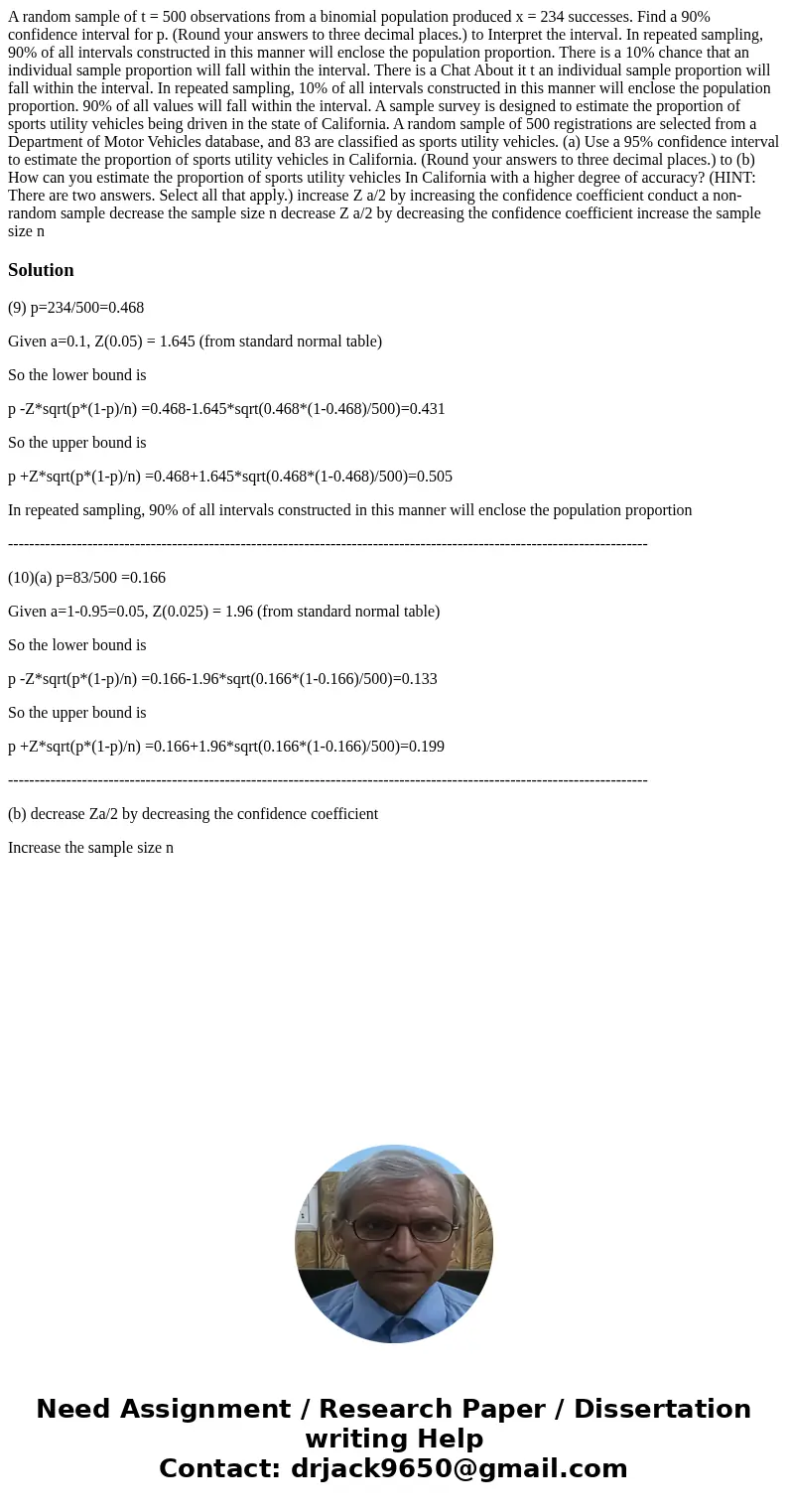A random sample of t = 500 observations from a binomial population produced x = 234 successes. Find a 90% confidence interval for p. (Round your answers to three decimal places.) to Interpret the interval. In repeated sampling, 90% of all intervals constructed in this manner will enclose the population proportion. There is a 10% chance that an individual sample proportion will fall within the interval. There is a Chat About it t an individual sample proportion will fall within the interval. In repeated sampling, 10% of all intervals constructed in this manner will enclose the population proportion. 90% of all values will fall within the interval. A sample survey is designed to estimate the proportion of sports utility vehicles being driven in the state of California. A random sample of 500 registrations are selected from a Department of Motor Vehicles database, and 83 are classified as sports utility vehicles. (a) Use a 95% confidence interval to estimate the proportion of sports utility vehicles in California. (Round your answers to three decimal places.) to (b) How can you estimate the proportion of sports utility vehicles In California with a higher degree of accuracy? (HINT: There are two answers. Select all that apply.) increase Z a/2 by increasing the confidence coefficient conduct a non-random sample decrease the sample size n decrease Z a/2 by decreasing the confidence coefficient increase the sample size n
(9) p=234/500=0.468
Given a=0.1, Z(0.05) = 1.645 (from standard normal table)
So the lower bound is
p -Z*sqrt(p*(1-p)/n) =0.468-1.645*sqrt(0.468*(1-0.468)/500)=0.431
So the upper bound is
p +Z*sqrt(p*(1-p)/n) =0.468+1.645*sqrt(0.468*(1-0.468)/500)=0.505
In repeated sampling, 90% of all intervals constructed in this manner will enclose the population proportion
-------------------------------------------------------------------------------------------------------------------------
(10)(a) p=83/500 =0.166
Given a=1-0.95=0.05, Z(0.025) = 1.96 (from standard normal table)
So the lower bound is
p -Z*sqrt(p*(1-p)/n) =0.166-1.96*sqrt(0.166*(1-0.166)/500)=0.133
So the upper bound is
p +Z*sqrt(p*(1-p)/n) =0.166+1.96*sqrt(0.166*(1-0.166)/500)=0.199
-------------------------------------------------------------------------------------------------------------------------
(b) decrease Za/2 by decreasing the confidence coefficient
Increase the sample size n

 Homework Sourse
Homework Sourse